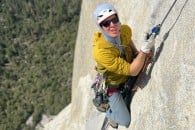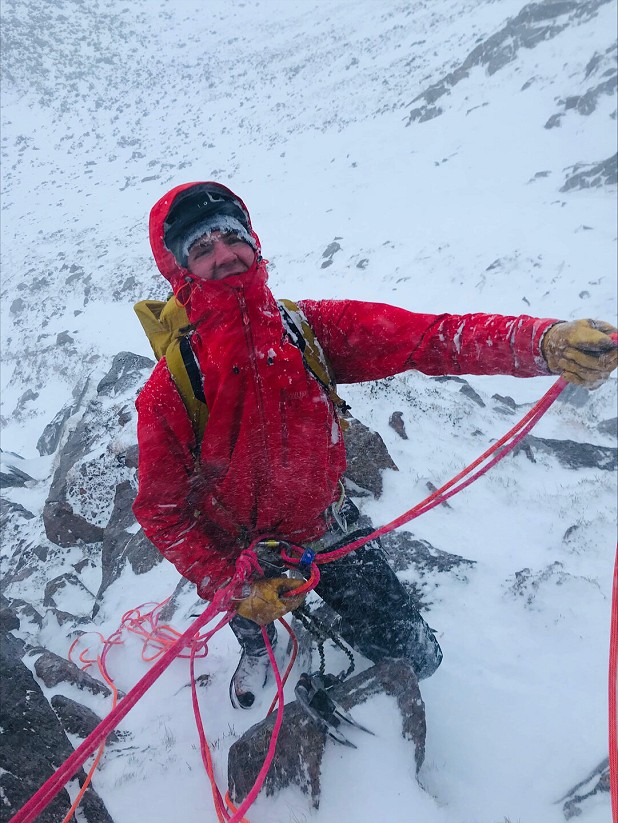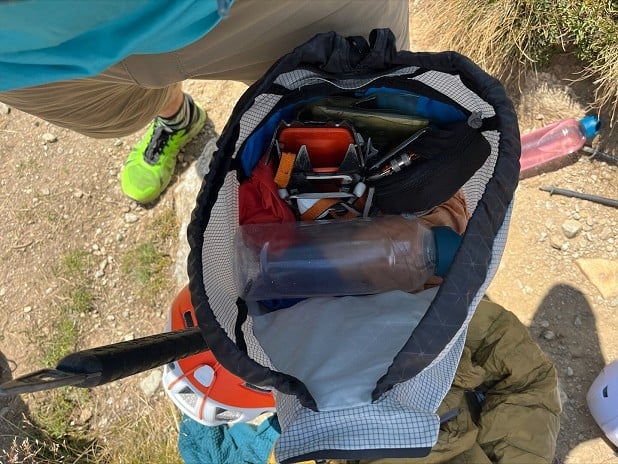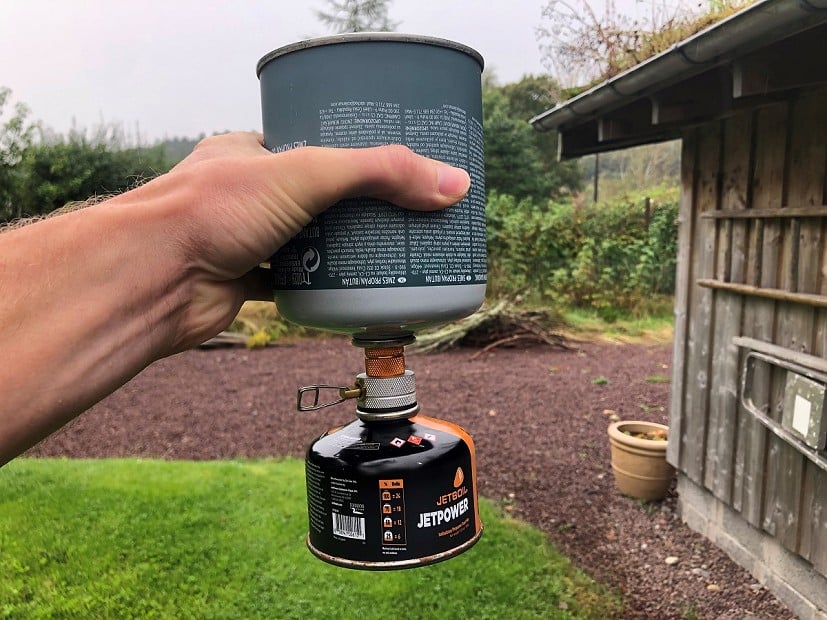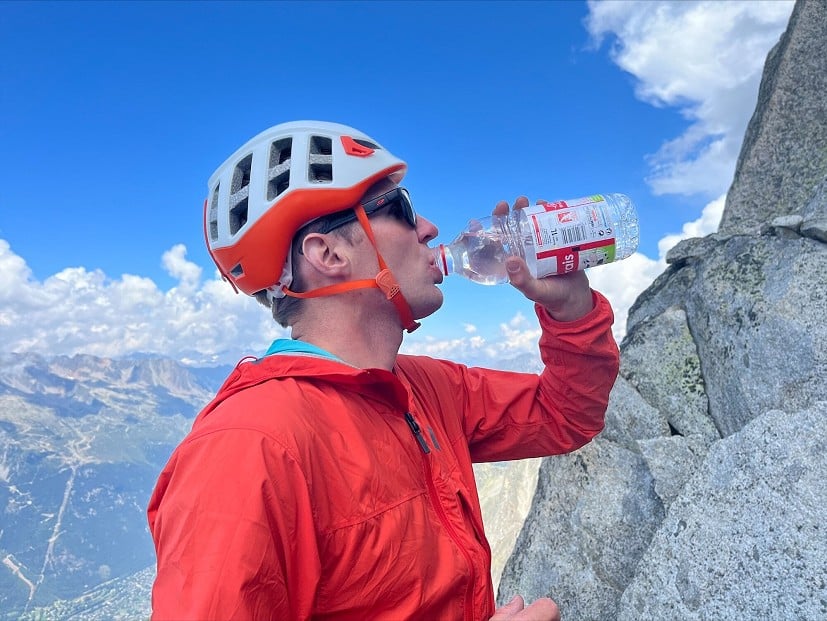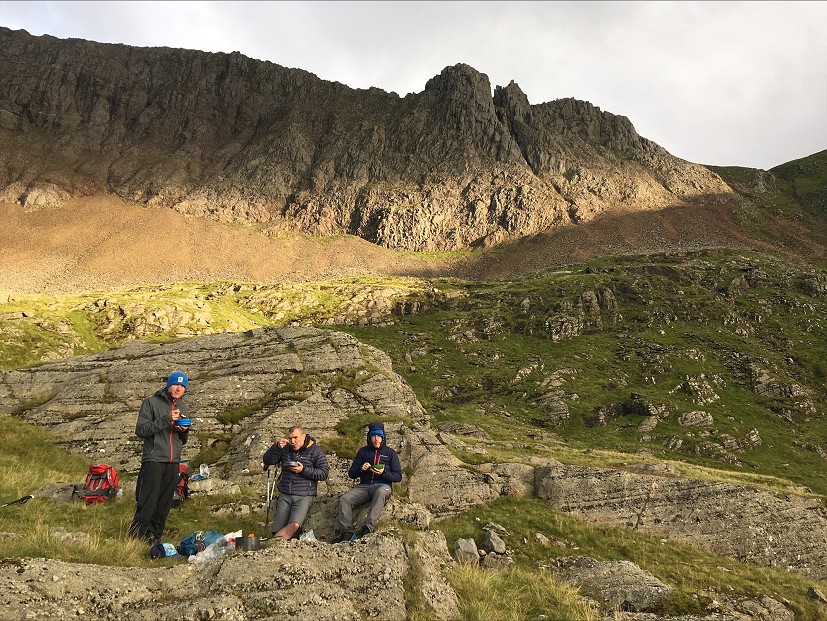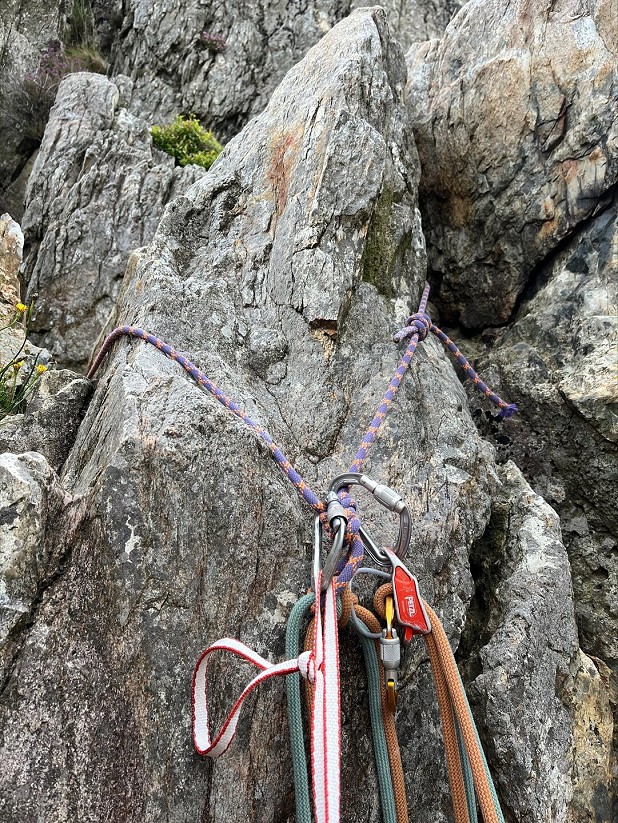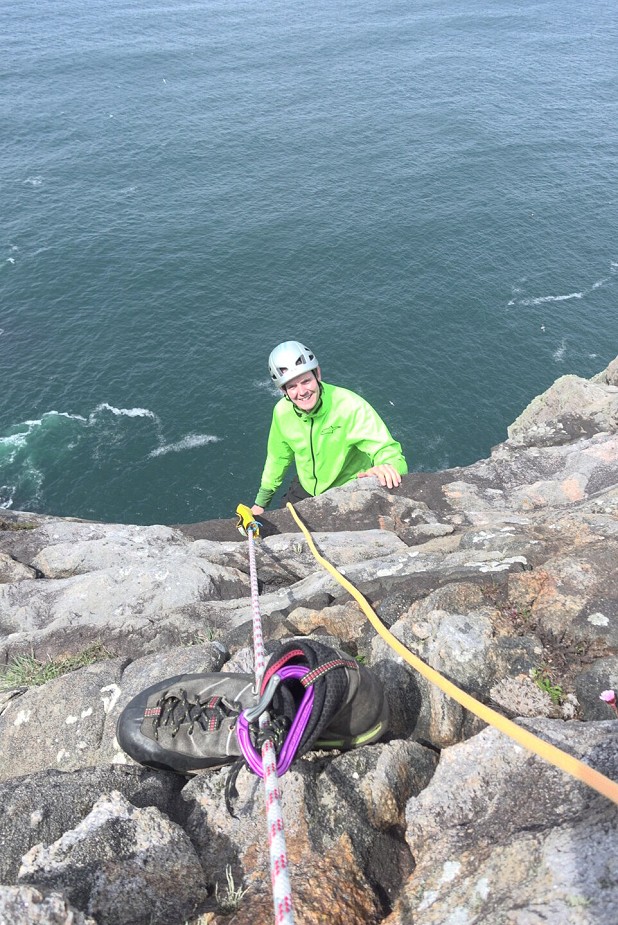12 Ways to Save Cash on Outdoor Gear
As the cost of living continues to soar, we're all looking to save money and cut unnecessary outlay. To help make a modest dent in the outdoor budget, I thought I'd share some everyday items that might do in place of more expensive branded gear.
In my experience these things perform just as well as the big brand products, give or take, but without breaking the bank (or your body - they're not safety-critical, don't worry).
For more money saving ideas, see Fliss Freeborn's recent guide to dirtbag living:
Gloves
Fancy handwear does not come cheap. But climbers, winter walkers and mountaineers aren't the only people who get cold hands. Fleece-lined leather gloves are available from most hardware shops and online for around £10. Sure, the fit is going to be more approximate than posh alternatives but in my experience they are warm, quite dextrous, reasonably weatherproof, and often last longer than sexy branded versions costing ten times as much. It seems rare to see mountain guides using branded outdoor gloves, and those that do are often sponsored by an outdoor brand!
In summer I like to have pair of leather gloves for belaying, rope handling, and keeping my hands warm. A pair of unlined leather gloves work great for this. It is worth punching a hole in the cuffs and tying a loop of cord through them so they can be clipped to a harness. While they're unlikely to fit quite as well as something pricey that you've tried on in the shop, they can be purchased for less than £5 from hardware/agricultural/garden suppliers.
For leading hard pitches, you might want a bit more dexterity. SHOWA Temres 282 gloves are designed for Japanese fishermen. They're lightly insulted, sticky and pretty waterproof. They are available off Amazon for around £18, plus they're used by alpine uber wads like Colin Haley and Tom Livingstone - so you'll look the part!
Leather palmed, insulated, "waterproof" mountain glove - in the region of £100
Delta Plus FBF15 Fur Lined Leather - £10.50
Leather "belaying gloves"- in the region of £40
Delta Plus Venitex FB149 Leather Work Gloves - £4.50
Thin softshell, leather palmed gloves - in the region of £45
SHOWA Temres 282 - £18
Rucksack liners
Instead of buying an expensive, lightweight dry bag (which I've found aren't even all that great at keeping water out) a heavy duty plastic rubble sack does a very effective job of keeping the worst of the weather out. Sure, you can't seal them like you can a dry bag, but if you roll the rubble sack closed inside the rucksack, it does almost as good a job - you'd probably have to physically fall in a river to spot the difference. Regardless of what you choose to use as a rucksack liner, I would always recommend packing a down sleeping bag in a lightweight dry bag.
You can buy a roll of rubble sacks for a few quid from any hardware shop or builders' merchant. An even cheaper option is to save a big durable plastic bag or piece of packaging.
50 litre dry bag - c.£20
Roll of rubble sacks - £4ish
Crampon bags
These are a proper pet hate of mine! After a couple of uses - particularly in rocky Scotland - your new crampon points are likely to be a little dull. Perhaps you don't need to shell out on something specifically designed to carry them? I carefully wrap mine in a fleece or a mid layer and place them in my bag, normally near the top just under my helmet. For an activity like waterfall ice climbing, where it is beneficial for your points to be razor sharp, a 'Bag for Life' does the trick.
Top tip: It's worth adding a crisscross of elastic to the front of your pack. This can be handy on those occasions when your bag's capacity has been reached, or for the end of the day when packing neatly tends to get harder. If you are going to attach your crampons in this way, I would strongly recommend tying the crampon straps together, and through a loop on the bag. Hopefully this will make them harder to lose.
Shop-bought crampon bag - £15-20
Wrapping it in your fleece or using a bag for life - Free or virtually free!
Gas refills
Camping gas - the less you buy, the more it costs. While you'll want to carry only the smallest (hence lightest) canisters available on a short backpacking trip or an alpine bivvy, these little bottles are disproportionately extortionate compared with bulk buying in big canisters. To get round this, invest in an affordable two-way valve - one of the few outdoor-related bits of gear that Amazon is good for. With this it's possible to refill a used small canister from a fuller larger one, allowing you to go on using your little bottle almost indefinitely, rather than burning a hole in your wallet buying a new one every trip. If you're out a lot, the initial cost of the gizmo will soon be paid back.
Gas refill adapter, around £8
Camping crockery and cutlery
Instead of forking out [ see what we did there?] on fancy collapsible bowls and titanium eating irons, grab some cutlery from your kitchen drawer and use a Tupperware box as a bowl. I do this whether backpacking, car camping, biking, or climbing on alpine north faces. A steel fork and spoon is slightly heavier than a titanium one, but I can't imagine a situation where it would be the difference between success and failure.
(There is a very funny scene in Cold Haul - a great film about Andy Kirkpatrick and Ian Parnell making the second ascent of the Lafaille Route, on the Dru, in winter - where the pair find Jean Christophe Lafaille's abandoned haul bag, and rummage through it. Upon finding Lafaille's steel spoon, Parnell wryly comments that it's very heavy and he can't know very much about lightweight gear. Kirkpatrick was High Mountain Magazine's gear editor at the time, and Lafaille was one of the best alpinists in the world.)
A reusable coffee cup works great as a camping cup. It's also worth paying attention to the packaging your food comes in, as often it can be re-purposed. Unsurprisingly, bread bags make great sandwich bags and the plastic tubs soup comes in work well as a lightweight cup.
Branded collapsible camping bowl: £13
Tupperware clip box: £3.50
Titanium knife fork and spoon: £18
Any old cutlery from your kitchen: free
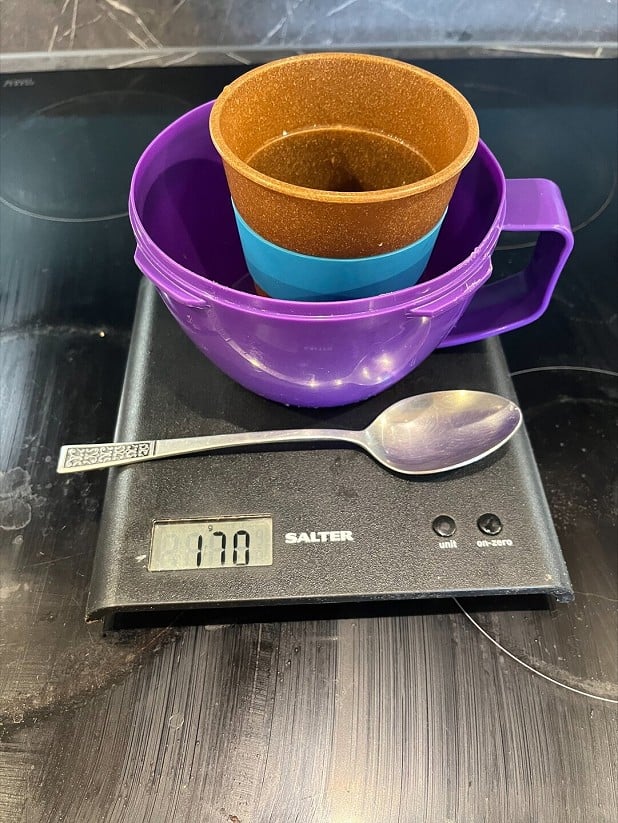
Water bottles
This going to be a controversial one. A couple of 1 litre pop bottles are collapsible, durable, lighter, and cheaper than a branded one. They come with a free drink, too. Sure, they're bad for the environment, but they're worse if you throw them away after one use. I appreciate that they'll get mashed up and break quicker than a dedicated outdoor bottle, but if you were going to buy the drink anyway and you then re-use them again and again and eventually recycle them, surely that's a lesser evil.
Branded outdoor bottle: £10-14.
1 Litre bottle: £1ish including a free drink!
Freeze-dried meals and fancy camping food
Freeze-dried meals might be convenient, but unless you're sitting on a bivi halfway up an alpine north face, they're far from essential. Normal food is a lot cheaper, not exactly difficult to cook, healthier, and most importantly tastier. For some great camp cookery ideas see this article by Fliss Freeborn:
Simpler still, my favourite quick camping dinner is: fresh filled pasta, served with a glug of extra virgin olive olive, a small handful of seeds, some grated Parmesan, and a few spinach leaves. It takes less than ten minutes to prepare, and it's not too fiddly in a tent awning. Cup a Soup is a good starter and a small bit of dark chocolate is a great dessert.
For breakfast I opt for muesli and powdered milk, with a few chunky banana chips. I normally pre-make this at home for convenience.
Instead of gels, expensive branded bars and sweets, for lunch/snacks I prefer to eat Jelly Babies, nuts, oatcakes, fruit and sandwiches.
Freeze-dried meal: £6-£12; branded bars: £2ish each; gels: £1.50ish each; branded sweets: £2.50ish each.
Fresh pasta: £1.60; Muesli: 24p per portion; Jelly Babies: 85p a packet. For exact prices, see your local supermarket, but you'll save a lot by eating "normal" food.
Chalk bag belt
Sure, this isn't going to pile up the pennies, but a length of 6-8mm cord is marginally cheaper than a webbing belt. Plus, it can be used as a Prussik loop or abseil tat if required.
Top tip: tie it around your waist with an overhand knot (as if you were tying two ropes together for abseiling), rather than a reef knot, which in my experience quickly come undone.
Webbing chalk bag belt - £4.99
1.25 metres of 7mm cord - £1.75
Abseil Tat
Rather than shelling out £1 a metre on 7mm cord, consider cutting down an old - but still intact, with no significant damage to the sheath or core - half rope and using that instead. Granted, that does assume you have an old rope lying around, so not the best tip for a new climber.
7mm tat: £1.20 per metre
Old rope: Free
Rope bag
Rope bags are great. They keep the dirt out of your rope, making it last longer, particularly at dusty Euro sport crags, and make moving between routes easier. However, the ubiquitous Ikea carrier bag works nearly as well and costs just 75p. I would argue that for a fledgling sport climber, a clip-stick is a much better use of £40.
Shop-bought rope bag £25-£45
Ikea bag - 75p
Rope Protectors
As anyone who has shredded an abseil rope will attest, rope protectors are pretty essential. While commercially available models aren't extortionate, a 50cm by 50cm bit of old carpet with a loop of cord tied through it is a fair substitute. If you're lucky enough to own a sewing machine, you can easily knock them up with some velcro and some canvas, or even the leg of an old pair of jeans.
Shop-bought rope protector: £15
Old piece of carpet or home-made version: not much/free.
50m half ropes
60m half ropes are a pet hate of mine. They're great for long snow and ice climbs, but for rock climbing (especially for British trad climbing) I think they're massively overrated. 50m ropes are lighter, quicker to coil, 10m less to pull up at the end of each pitch, and, of particular relevance to this article, cheaper.
Remember, you don't need to own a pair of half ropes — you just need one, and your climbing partner can bring the other. If she/he turns up with a 60m, cut the extra 10m off and use it as tat! Only kidding, I'm sure you'll muddle along just fine.
50m half ropes are £20-£40 less per rope than 60s
